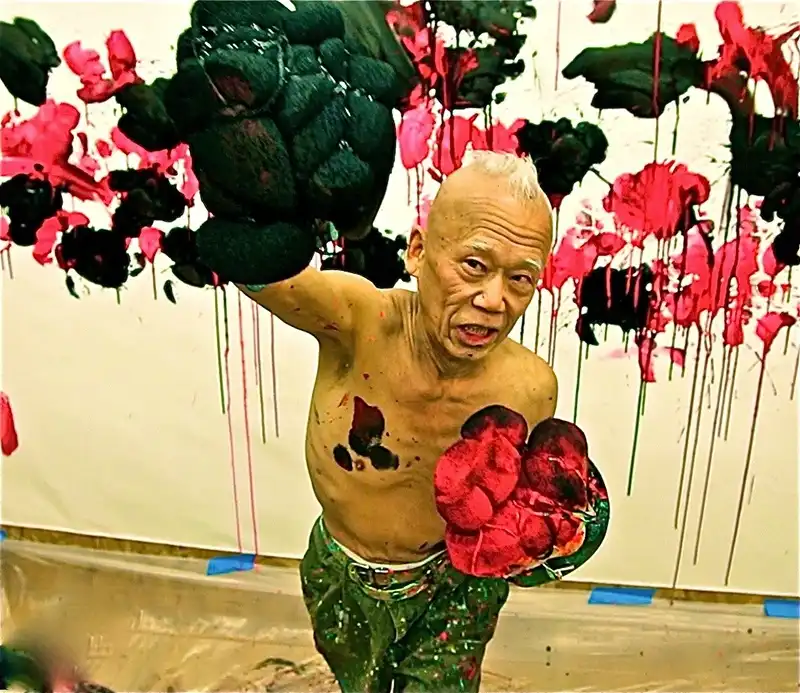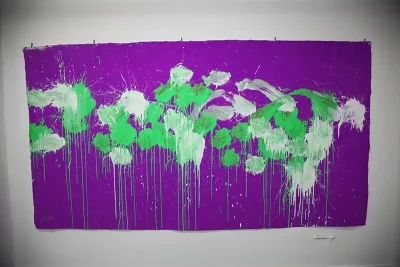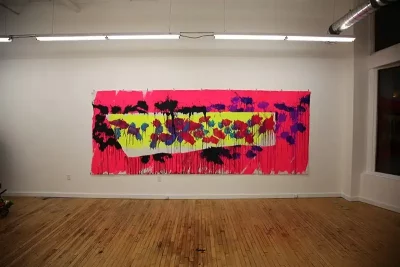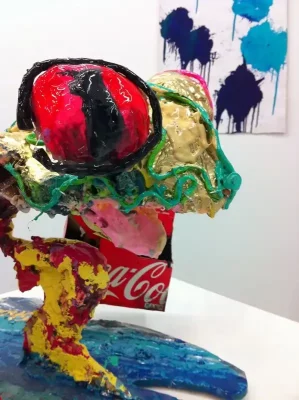
Ushio Shinohara Exhibit Opening @ CUAC 01.18
Art
The crowd was different that cold Friday evening in January. The Sundance Film Festival raged on, bringing Park City folks to Salt Lake and to CUAC’s Shinohara opening. The brightly lit gallery, despite its stark interior, felt inviting and warm, full of life and art.
Vivid, large tableaus decorated the walls. Quirky sculptures were sprinkled throughout. For those who don’t know, this opening is a big deal for the local art world. So, if you were too busy hibernating (no judgment) to attend the opening, be sure to check it out.

Ushio Shinohara is one of the great artists of our time, whose oeuvres have been on display at some of the world’s top museums including the MoMA and The Metropolitan Museum of Art. He also showed in galleries alongside Andy Warhol, Jasper Johns and Robert Rauschenberg.
He draws inspiration from a mixture of disparate sources: the art of Marcel Duchamp, Zen practices, pop culture, his contemporaries and undoubtedly from war. Shinohara’s seemingly unfinished pieces, frayed canvases and unframed tableaus have led him to be categorized as a Neo-Dadaist. He has also been lumped with the Abstract-Expressionists (think: Jackson Pollack and Mark Rothko) because of his large canvases and the centrality of performance in his art.
As Pollack splattered paint across giant tableaus, Shinohara punches them with paint-covered boxing gloves. Often he makes his art into public performance, inviting an audience into his studio to watch his art-making. “They [the critics] like it or they don’t.” Shinohara says. “It’s not my problem.” With that, he whipped out his fiercest gangsta lean and moved on to showing me his new book.
He grew up in Japan with two artist parents who educated him in art history while pushing him into their world. Evidently, surviving WWII in Japan defined his perspective and his art. When talking with Ushio, he explained that after the bombs were dropped and the peace treaties signed, Japan was devastated. There were no canvases, no art supplies, so artists used what they could find around them.
At the time, the country was littered with debris and “junk.” According to Shinohara, this “junk” was collected and then transformed into art. His sculptures reflect this phenomenon, crafted from papier-mâché, metal, and cardboard, then painted with bright colors. Reminiscent of Warhol, some even include quotidian consumer goods like Coke bottles; he artifies the everyday.

When first entering the gallery, I found myself momentarily stunned by the colors, movement, and scale of his works. Initially, the only thing that came to mind was Fauvism, an early 20th Century modern art movement in Europe in which artists painted in wild brush strokes and in vivid colors.
These colors often represented powerful emotions and acts: anger, sex and sorrow. Critics often dismissed their works as obscene. The vivid color and the sheer violence in Shinohara’s canvases harken back to this movement. He modernizes this violence, this anger and this sorrow, making it his own. With each punch, a bout of catharsis is imprinted onto the canvas.
It was while chatting with the CUAC’s director and critically acclaimed artist, Adam Bateman, a sculpture of a frog carrying two six packs of Coca Cola bottles came into my peripheral view. The frog taps into the grotesque tradition, in its pointed ugliness, its disproportionately large pink and red eyes, its golden arms and yellow and turquoise body.

It stood on a pedestal with its mouth hanging open, arms swinging, as if in mid-stride. Moreover, the manner in which Shinohara sculpts mimics the style in which Vincent van Gogh painted. The deep grooves in the mixed media objects parallel the layered paint and the heavy hand of the Dutchman. Intensity is built into the form and combined with a bundle of emotions waiting to be unpacked and interpreted by the viewer.
But the frog was different from his other works—it lacked the fury of the beaten canvases. I appreciated that he played with jest. After all, it was a frog carrying a lot of Coke. And, to be perfectly honest, it kind of made me thirsty.
I lingered at the gallery absorbing the oeuvres around me, all the while mustering up the courage to face the cold air and the cold car that awaited me. This exhibit left me inspired. CUAC is breathing new life into Salt Lake’s art scene, enriching the monthly gallery stroll, and bringing badass artists like Ushio Shinohara to our doorstep.
So be brave, SLUG readers! Venture outside your warm abode. I promise that your courage will be rewarded.